Alpha Particle Radiation
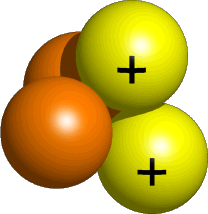
The larger the nucleus of an atom becomes, the more the
repulsive coulomb force between the positively charged protons begins to
overcome the attractive nuclear force that binds the nucleus together. In
order to regain stability, the nucleus radiates an alpha particle, which
contains two protons and two neutrons. This process continues until the
nuclear force and the Coulomb force once again "balance".

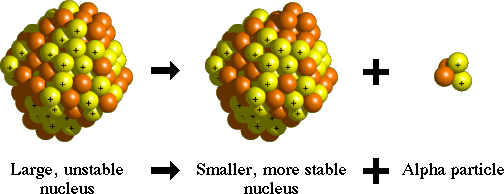
Alpha particles are considered "large" and relatively
slow moving particles in the nuclear world. They also carry 2 positive
charges. This strong charge will interact with the electrons of whatever
substance it enters, pulling them away from their atoms, thereby causing ions -
the negative electrons and the now positively charged atoms. Because the
alpha particle carries a large charge and moves slowly, it causes many
ionizations along a very short path as it gives up its energy (tens of thousands
per centimeter in air). The alpha particle quickly gives up all its energy
and is stopped in a short distance.
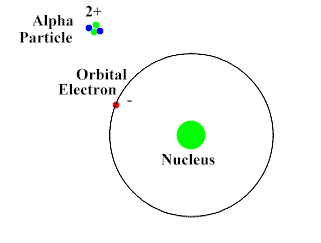
Alpha Particle Interaction


Protection
The range of the alpha particle is so small, that this highly
ionizing particle cannot penetrate the dead layer of human skin. It is
only a hazard when it can come in contact with live tissue, as is the case when
it is ingested or inhaled. Protection from alpha emitting radiation is
based on prevention of radioactive dust, gas, or smoke, or if these exist or may
exist, in using proper respiratory protection, anti-contamination clothing, and
engineering controls to prevent inhalation or ingestion.
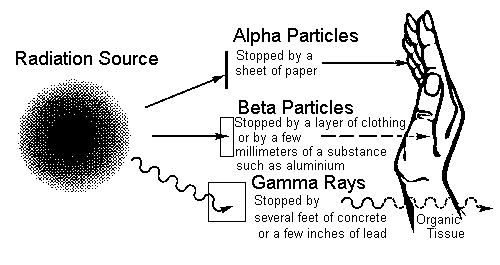
One important note before moving on to the other
radiations. Just because a radionuclide is listed as an alpha emitter it
doesn't mean it only emits alphas. Many alpha emitters also give
off beta, gamma, and/or x-ray radiation as the nucleus seeks stability. It
is important to know all the radioactive emissions in order to accurately
evaluate the hazards.
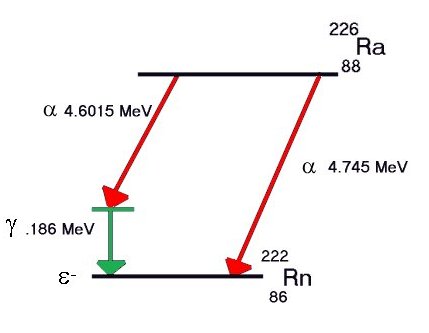
The most common alpha source at Ames is Am-241 - both in sealed sources and
in smoke detectors. The greatest concentration of this isotope is located
in the Motor Mount of Building N218 - mainly because this is where we collect
the discarded industrial smoke detectors.
These alpha sources are a very low hazard and would only be a concern in a major fire. Emergency measures for a fire
involving large quantities of Am-241 would be respiratory protection, protective
clothing, plume control/evaluation, and control of the water run-off if
possible.
and would only be a concern in a major fire. Emergency measures for a fire
involving large quantities of Am-241 would be respiratory protection, protective
clothing, plume control/evaluation, and control of the water run-off if
possible.







![]()



 and would only be a concern in a major fire. Emergency measures for a fire
involving large quantities of Am-241 would be respiratory protection, protective
clothing, plume control/evaluation, and control of the water run-off if
possible.
and would only be a concern in a major fire. Emergency measures for a fire
involving large quantities of Am-241 would be respiratory protection, protective
clothing, plume control/evaluation, and control of the water run-off if
possible.![]()